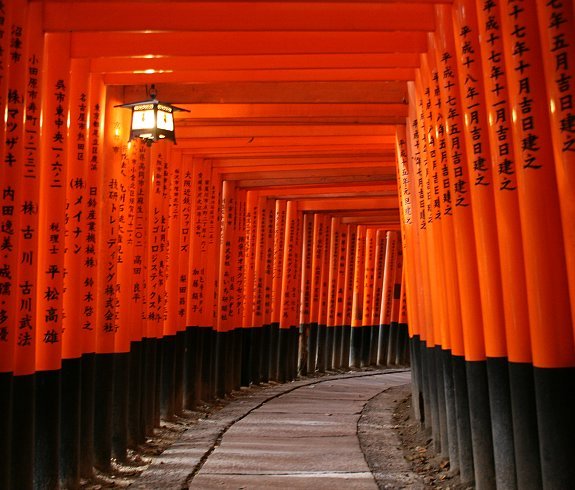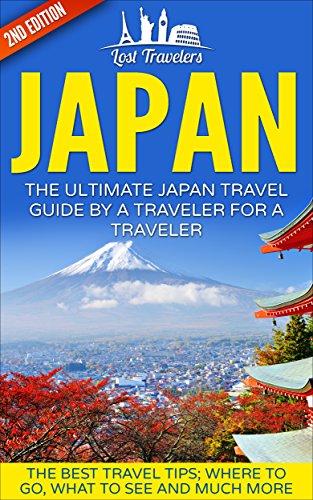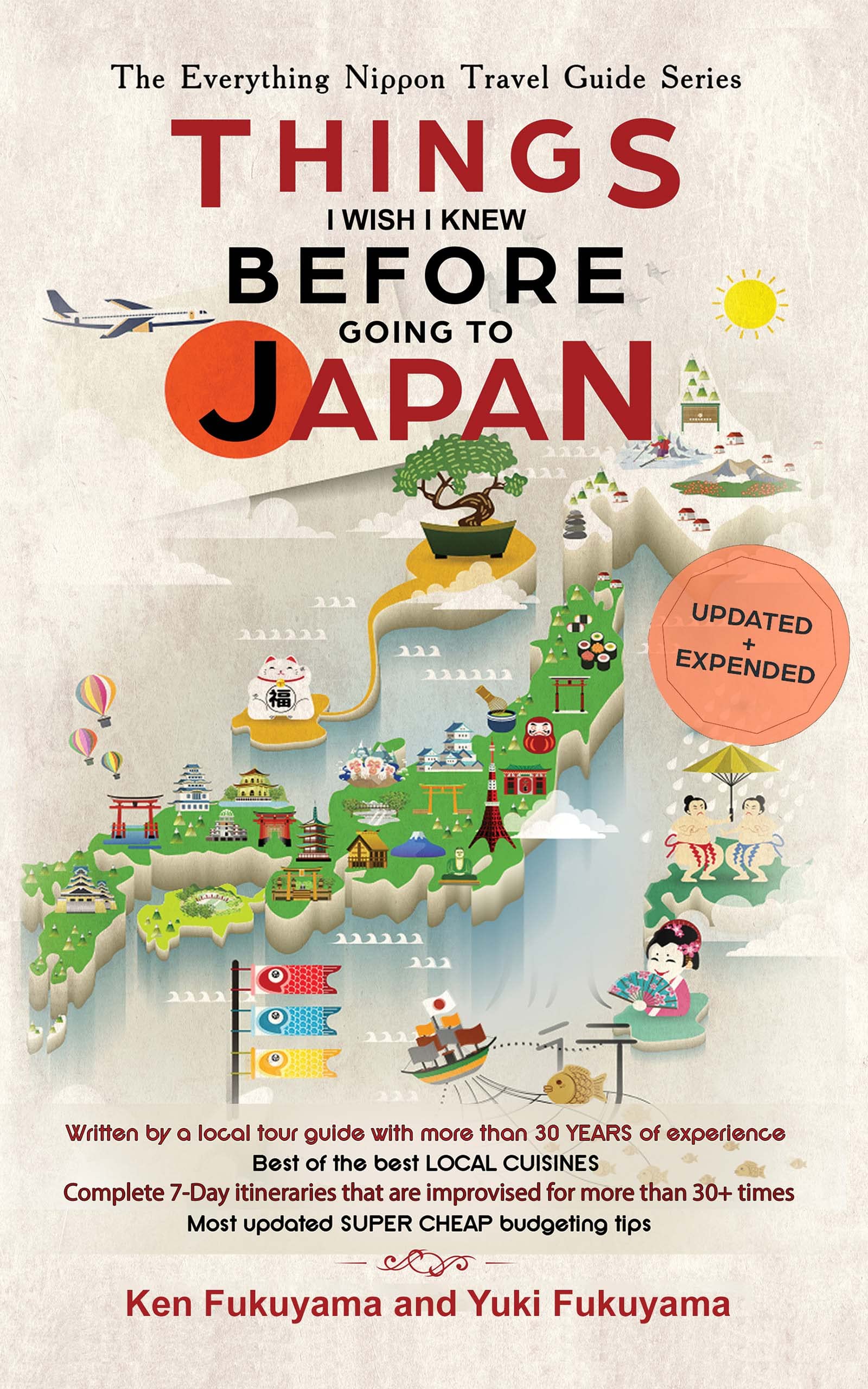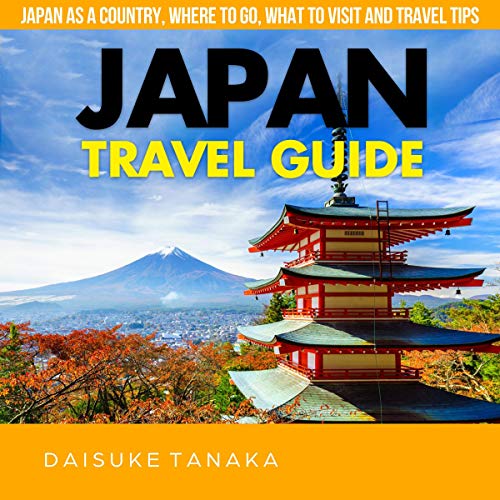Win a Free Trip to Japan!
Experience cherry blossoms and ancient temples
If you’re planning a trip to one of the most fascinating countries in the world, this Japan Travel Guide is your perfect companion. Japan seamlessly blends ancient traditions with modern innovations, offering travelers a unique cultural experience. From the vibrant streets of Tokyo to the serene temples of Kyoto, you’ll uncover countless must-see destinations. With essential travel tips and insights into local customs, this guide will equip you with everything you need for an unforgettable adventure. So, buckle up and get ready to explore the beauty and charm of Japan!
Essential Travel Tips for Visiting Japan
When planning your trip, a comprehensive Japan Travel Guide can significantly enhance your experience. Here are some essential tips to consider:
-
Research Local Customs: Understanding cultural etiquette is crucial in Japan. For instance:
- Bowing is a common greeting.
- Remove your shoes when entering homes and some traditional accommodations.
- Cash is King: While credit cards are becoming more widely accepted, Japan still relies heavily on cash. Always carry enough yen for daily expenses, especially in rural areas.
- Purchase a Japan Rail Pass: If you plan to travel between cities, consider buying a Japan Rail Pass. It offers unlimited travel on most trains for a set period, making it a cost-effective choice.
-
Learn Basic Japanese Phrases: While many Japanese people speak English, learning a few basic phrases can enhance communication and show respect for the culture. Key phrases include:
- "Arigatou" (Thank you)
- "Sumimasen" (Excuse me/Sorry)
- Timing Your Visits: Popular tourist spots can get crowded, especially during peak seasons. Early mornings or late afternoons are typically quieter times.
- Travel Insurance: Don’t overlook travel insurance. It can save you from unexpected expenses due to cancellations, health issues, or lost belongings.
Arming yourself with these tips can make your journey smoother and more enjoyable. This comprehensive approach is what a good Japan Travel Guide should provide, enabling you to explore this beautiful country with confidence.

Must-See Destinations in Japan
When exploring Japan, you’ll encounter a stunning array of must-see destinations that will leave you in awe. This Japan Travel Guide highlights some of the most iconic locations you shouldn’t miss.
-
Tokyo: A bustling metropolis where tradition meets modernity. Visit:
- Shibuya Crossing
- Sensoji Temple
- The Tokyo Skytree for breathtaking city views.
-
Kyoto: Known for its rich history and beautiful temples. Don’t miss:
- Kinkaku-ji (Golden Pavilion)
- Fushimi Inari Taisha with its vibrant torii gates.
- Traditional tea houses in Gion.
-
Osaka: Renowned for its food scene. Highlights include:
- Dotonbori district with famous street food.
- Osaka Castle, offering a glimpse into Japan’s feudal past.
- Universal Studios Japan for family fun.
-
Hiroshima: A place of remembrance and peace. Key spots:
- Hiroshima Peace Memorial Park
- The haunting A-Bomb Dome.
- Nearby Miyajima Island, famous for Itsukushima Shrine.
-
Hokkaido: Perfect for nature lovers, with:
- Stunning landscapes in Shiretoko National Park.
- Sapporo for its annual snow festival.
These destinations offer a rich tapestry of experiences that showcase Japan’s diverse culture, architecture, and natural beauty. This Japan Travel Guide emphasizes that each location has its own unique charm, ensuring every traveler finds something special.
Cultural Etiquette and Customs
Understanding cultural etiquette is essential for travelers exploring Japan. This insight not only enhances your experience but also fosters respect between you and the locals. Here are some key customs to keep in mind, as highlighted in this Japan Travel Guide:
- Bowing: Instead of shaking hands, the Japanese greet each other with a bow. The depth and duration of the bow can reflect the level of respect.
- Shoes Off Indoors: In many homes, traditional inns (ryokans), and some restaurants, it’s customary to remove your shoes. Always look for slippers available for guests.
- Dining Etiquette: When dining, it’s polite to say “itadakimasu” before the meal and “gochisousama deshita” afterward. Avoid sticking chopsticks upright in rice, as it resembles funeral rituals.
- Public Behavior: Maintain a low volume in public spaces. Talking loudly, especially on public transport, is considered impolite.
- Gift Giving: Offering a small gift when visiting someone’s home is customary. Beautifully wrapped gifts, known as furoshiki, show appreciation.
By adhering to these social norms, you can ensure a more enriching experience during your visit. This Japan Travel Guide encourages respecting local customs for a more authentic journey, while fostering goodwill and connection with the Japanese people.
Japanese Cuisine: What to Try
A visit to Japan is incomplete without indulging in its rich and diverse culinary offerings. This Japan Travel Guide highlights must-try dishes that will tantalize your taste buds and provide a true taste of Japanese culture.
Top Japanese Dishes
-
Sushi
- Fresh fish served atop vinegared rice; includes various styles like nigiri, maki, and sashimi.
-
Ramen
- Noodle soup with broth varieties such as shio (salt), shoyu (soy sauce), miso, and tonkotsu (pork bone).
-
Tempura
- Lightly battered and deep-fried vegetables or seafood; served with a dipping sauce.
-
Okonomiyaki
- Savory pancake filled with ingredients such as cabbage, meat, seafood, and topped with sauces.
-
Kaiseki
- Traditional multi-course meal showcasing seasonal ingredients and meticulous presentation.
-
Takoyaki
- Savory dumplings filled with minced or diced octopus, garnished with bonito flakes and takoyaki sauce.
Cooking Classes and Food Tours
To enhance your culinary journey, consider joining:
- Cooking Classes: Learn to make sushi or ramen with local chefs.
- Food Tours: Sample street food and local specialties guided by experts.
Exploring Japanese cuisine not only satisfies your hunger but also immerses you in the country’s culture. This Japan Travel Guide invites you to savor every bite!

Getting Around: Transportation Options
When exploring Japan, efficient transportation options help you maximize your experience. This Japan Travel Guide highlights the most effective ways to navigate the country.
1. Rail Travel
Japan boasts one of the world’s best rail systems, especially with the Shinkansen (bullet trains). Here’s why rail travel is a top choice:
- Speed: Shinkansen connects major cities, like Tokyo to Osaka, in under three hours.
- Punctuality: Trains run on time, making them a reliable choice.
- Comfort: Spacious seating and amenities.
2. Subway and City Trains
In urban areas, subways and local trains are convenient for short distances. Key features include:
- Extensive Network: Covers most major cities.
- Frequency: Trains run frequently, reducing wait times.
3. Buses
Although trains dominate, buses also serve as a great option, particularly in rural areas:
- Cost-Effective: Generally cheaper than trains.
- Scenic Routes: Offers beautiful views of the countryside.
4. Taxis
Taxis provide a convenient, though more expensive, way to travel. They’re widely available, especially in cities.
5. Bicycles
Many cities promote cycling. Rent a bike to enjoy a leisurely pace while taking in the sights.
In conclusion, knowing your transportation options enhances your travel experience. Refer to this Japan Travel Guide when planning your journey, and you’ll discover the ease of getting around this fascinating country.
Accommodation Recommendations
When planning your trip, finding the right accommodation can significantly enhance your experience. This Japan Travel Guide will help you explore various lodging options that cater to different tastes and budgets.
Types of Accommodations
-
Hotels:
- Luxury: Renowned chains like The Ritz-Carlton and Mandarin Oriental offer opulence with stunning views.
- Business: Brands such as APA Hotels provide modern amenities for business travelers.
-
Ryokan (Traditional Inns):
- Experience Japanese hospitality and culture.
- Enjoy tatami mat rooms and onsen (hot spring baths).
-
Hostels:
- Perfect for budget travelers and backpackers.
- Many offer social environments, such as K’s House and HI Hostels.
-
Capsule Hotels:
- Unique to Japan, these provide compact sleeping spaces at affordable rates.
- Ideal for solo travelers seeking a quirky experience.
-
Vacation Rentals:
- Services like Airbnb let you stay in a local’s home, offering a personal touch.
- Great for families or groups needing more space.
Comparison Table
| Accommodation Type | Pros | Cons | Average Nightly Rate |
|---|---|---|---|
| Hotels | Luxurious, convenient | Can be expensive | $200 – $600 |
| Ryokan | Cultural experience | Limited availability | $150 – $400 |
| Hostels | Affordable, social | Shared facilities | $20 – $60 |
| Capsule Hotels | Unique, compact | Limited space | $30 – $80 |
| Vacation Rentals | Space for groups | Varies by location | $100 – $300 |
In summary, the choice of accommodation in Japan can shape your adventure. Ensure to consider your preferences and budget while exploring this Japan Travel Guide to make the most of your stay!
Best Times to Visit Japan
Understanding when to visit Japan enhances your travel experience significantly. This Japan Travel Guide highlights the best times to explore the country, ensuring you enjoy its beauty and cultural events.
Seasons Overview
-
Spring (March to May):
- Marvel at the cherry blossoms, known as sakura.
- Participate in hanami (flower viewing) picnics.
-
Summer (June to August):
- Experience vibrant festivals such as Gion Matsuri in Kyoto.
- Be prepared for high humidity and hot temperatures.
-
Autumn (September to November):
- Enjoy stunning fall foliage, particularly in cities like Kyoto.
- Ideal for hiking and outdoor activities.
-
Winter (December to February):
- Discover Japan’s winter sports in areas like Hokkaido.
- Visit the famous snow festivals, like the Sapporo Snow Festival.
Comparative Seasonal Highlights
| Season | Highlights | Best Activities |
|---|---|---|
| Spring | Cherry blossoms sakura | Picnics, festivals |
| Summer | Festivals, fireworks | Beach activities, hiking |
| Autumn | Fall leaves | Sightseeing, photography |
| Winter | Snow, winter sports | Skiing, hot springs |
Choosing the right time in this Japan Travel Guide can maximize your enjoyment. Spring and autumn are typically the most popular seasons; however, every season has its unique charm and activities, making Japan a year-round travel destination.

Unique Festivals and Events
Japan boasts a rich tapestry of festivals, each brimming with tradition and excitement. Including unique festivals in your Japan Travel Guide will enhance your experience, allowing you to immerse yourself in local culture. Here are some of the most celebrated festivals you shouldn’t miss:
-
Hanami (Cherry Blossom Festival)
- When: Late March to early April
- Highlights: Picnicking under blooming cherry trees, stunning sakura views.
-
Gion Matsuri
- When: July
- Location: Kyoto
- Highlights: Grand parades, intricate floats, traditional clothing displays.
-
Tanabata (Star Festival)
- When: July 7
- Highlights: Colorful decorations, writing wishes on tanzaku paper, vibrant celebrations.
-
Sapporo Snow Festival
- When: Early February
- Location: Sapporo
- Highlights: Massive snow sculptures, ice activities, food stalls.
| Festival | Month | Location | Key Features |
|---|---|---|---|
| Hanami | Late March – Early April | Nationwide | Cherry blossoms, picnics |
| Gion Matsuri | July | Kyoto | Processions, traditional floats |
| Tanabata | July 7 | Nationwide | Star decorations, wish-writing |
| Sapporo Snow Festival | Early February | Sapporo | Snow sculptures, winter sports |
Attending these festivals will not only enrich your understanding of Japanese traditions but also create unforgettable memories. Therefore, as you plan your trip, make sure to include these unique festivals in your Japan Travel Guide for an authentic experience.
Shopping in Japan: Where to Go
Shopping in Japan offers a fascinating mix of traditional craftsmanship, cutting-edge technology, and global brands. Whether you’re hunting for unique souvenirs or the latest fashion trends, this Japan Travel Guide will help you navigate the vibrant shopping scene.
Top Shopping Destinations
-
Tokyo
- Shibuya: Famous for its bustling streets and Hachiko statue. Check out Shibuya 109 for trendy apparel.
- Harajuku: Explore Takeshita Street for quirky fashion and accessories.
- Ginza: Experience luxury shopping with high-end boutiques and department stores.
-
Kyoto
- Nishiki Market: Discover local delicacies and traditional crafts. Perfect for foodies and souvenir hunters alike.
-
Osaka
- Shinsaibashi: A mix of local and international shops, great for fashion and gourmet treats.
Unique Shopping Experiences
- Local Crafts: Seek out traditional items like ceramics in pottery shops.
- Electronics: Visit Akihabara in Tokyo for the latest gadgets.
Comparison of Shopping Areas
| Location | Best For | Unique Features |
|---|---|---|
| Tokyo | Fashion & Innovation | Large shopping districts |
| Kyoto | Traditional Crafts | Historic marketplace |
| Osaka | Food & Entertainment | Lively atmosphere |
With these pointers from this Japan Travel Guide, you will find the best places to shop and bring home memories from your journey!
Navigating Language Barriers in Japan
When traveling to Japan, you might encounter language barriers. However, you can easily navigate this challenge with some preparation. Here are essential tips for overcoming communication hurdles during your trip:
- Learn Basic Phrases: Familiarize yourself with essential Japanese phrases, such as greetings and polite expressions. Even a simple "Arigatou" (thank you) demonstrates respect and can go a long way.
- Use Translation Apps: Download translation apps on your smartphone. Applications like Google Translate allow you to translate text and even voice prompts, making real-time communication more manageable.
- Flashcards: Prepare flashcards with key words or phrases you may need. This method helps in quick reference while on the go.
- Visual Aids: Carry a small notebook or images of common food items, transportation signs, and other essentials. Gesturing or showing pictures can bridge significant gaps in communication.
- Helpful Locals: Don’t hesitate to ask locals for help. Many Japanese people are eager to assist travelers, even if they can’t communicate fluently in English.
In conclusion, while the language barrier in Japan might seem daunting, tools such as a Japan Travel Guide, basic phrases, and technology will enhance your experience. By being proactive, you can create meaningful interactions and enrich your overall journey.
Frequently Asked Questions
What are the best times to visit Japan for tourism?
The best times to visit Japan for tourism are during the spring (March to May) and autumn (September to November). In spring, travelers can enjoy the breathtaking cherry blossoms, particularly in late March to early April when the blossoms are in full bloom. Autumn, on the other hand, offers stunning fall foliage and mild weather, making it ideal for outdoor exploration. Both seasons are accompanied by various festivals that showcase Japan’s rich culture.
What are must-see attractions in Japan?
Japan is filled with must-see attractions, including iconic sites such as Tokyo’s Shibuya Crossing, Kyoto’s historic temples like Kinkaku-ji (Golden Pavilion), and Hiroshima’s Peace Memorial Park. Other notable destinations include Mount Fuji, which offers great hiking opportunities, and the vibrant city of Osaka, known for its culinary delights. For a taste of traditional culture, Nara, with its free-roaming deer and ancient shrines, is also essential. Each of these locations provides a unique glimpse into Japan’s diverse heritage.
How can I get around Japan efficiently?
Getting around Japan efficiently is best accomplished using the extensive and punctual train system. The Japan Rail Pass is a popular choice for tourists, offering unlimited travel on many trains including the famous Shinkansen (bullet trains). In cities, subways and local trains are convenient for short distances. Bicycles are also a popular option in many areas, while buses provide coverage to regions not served by trains. Public transportation is known for its cleanliness, safety, and efficiency, making it an excellent choice for visitors.
What are some traditional Japanese foods I must try?
When in Japan, there are several traditional foods that are a must-try. Sushi, sashimi, and ramen are well-known worldwide, but be sure to enjoy regional specialties like Hiroshima-style okonomiyaki and Kyoto’s kaiseki ryori, a multi-course meal that emphasizes seasonal ingredients. Don’t overlook street foods such as takoyaki (octopus balls) and yakitori (grilled chicken skewers), typically found at various markets and festivals. For dessert lovers, matcha (green tea) treats and mochi are delightful options to indulge in.
What cultural etiquette should I be aware of when visiting Japan?
Understanding cultural etiquette in Japan is crucial for respectful interactions. It’s important to bow as a greeting, as this is a common practice. Always remove your shoes when entering someone’s home or traditional accommodation. When dining, be mindful not to stick chopsticks upright in rice, as it resembles a funeral rite. Additionally, speaking softly in public places and refraining from public displays of affection are appreciated. By following these customs, visitors will demonstrate their respect for Japanese culture.
